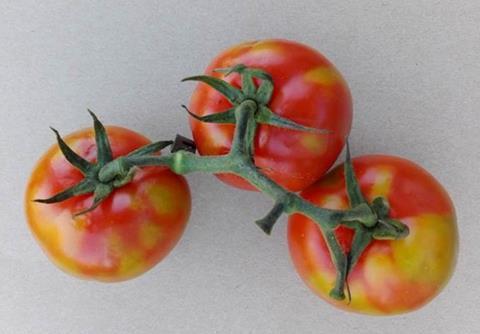Growers urged to look out for signs of the virus to ensure early detection
Tomato Brown Rugose Fruit Virus (ToBRFV) has been detected at two properties in the Northern Adelaide Plains region.

The Department of Primary Industries and Regions (PIRSA) is working closely with the affected businesses and quarantine measures have been implemented at both properties.
As part of response activities, PIRSA is investigating the source of the outbreak and determining any potential further spread so that effective mitigation measures can be implemented as quickly as possible.
ToBRFV is an exotic plant disease that affects tomatoes, capsicums and chillies. Listed on the National Priority Plant Pest list, it is a highly contagious plant virus and regarded as a considerable threat to Australia’s A$5.8bn vegetable industry due to reduced yield and quality of produce.
Infected plants show symptoms such as mosaic patterns, yellowing and deformities on leaves, while fruits develop brown wrinkled spots, deformations and uneven ripening, reducing their yield and marketability. Different plant varieties can present different symptoms.
South Australian chief plant health officer Nick Secomb said biosecurity is everyone’s responsibility.
“Growers are urged to look out for signs of tomato brown rugose fruit virus and report anything unusual to ensure early detection,” he said.
“PIRSA will continue to update industry on surveillance, testing and contract tracing efforts.”
For nearly a decade – since the initial discovery of ToBRFV, plant breeding and seed company Rijk Zwaan has been accelerating its research and development of disease-resistant tomatoes.
Rijk Zwaan has developed a range of varieties with a high level of resistance to ToBRFV under the Rugose Defense brand. These varieties have been commercially available in affected countries and trialled throughout Australia since 2022. In light of the recent detection, Rijk Zwaan said it will continue to release varieties with high resistance to ToBRFV for trials and commercial introduction to Australia.
While disease resistance offers some protection, Rijk Zwaan said it remains important to mitigate the risk of spread through strict hygiene measures on farms, including staff education, avoiding unnecessary contact with crops, reducing equipment and materials shared between facilities, disinfecting tools and propagating material and monitoring crops for disease symptoms.



